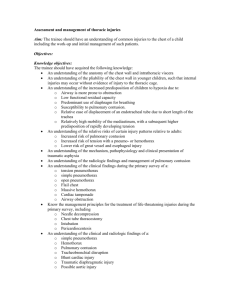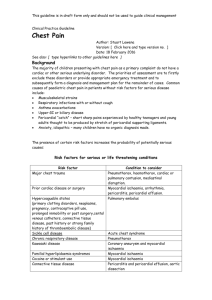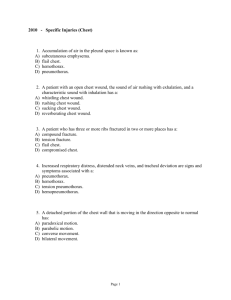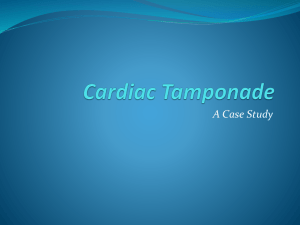Test IV Lane Questions Supplies
advertisement
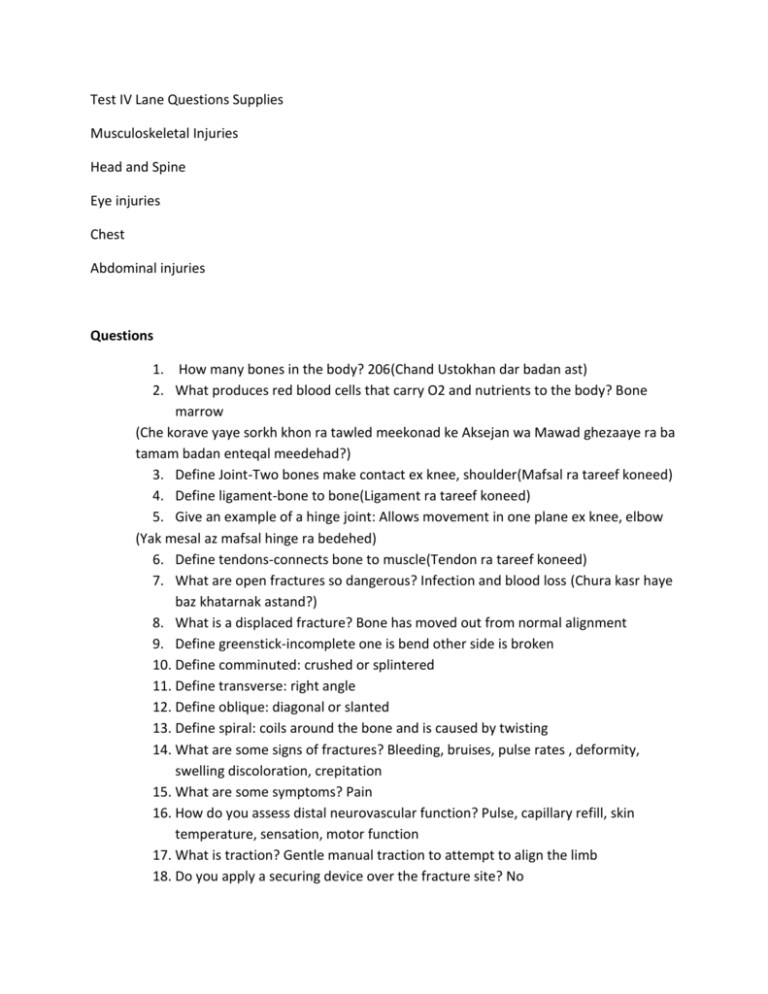
Test IV Lane Questions Supplies Musculoskeletal Injuries Head and Spine Eye injuries Chest Abdominal injuries Questions 1. How many bones in the body? 206(Chand Ustokhan dar badan ast) 2. What produces red blood cells that carry O2 and nutrients to the body? Bone marrow (Che korave yaye sorkh khon ra tawled meekonad ke Aksejan wa Mawad ghezaaye ra ba tamam badan enteqal meedehad?) 3. Define Joint-Two bones make contact ex knee, shoulder(Mafsal ra tareef koneed) 4. Define ligament-bone to bone(Ligament ra tareef koneed) 5. Give an example of a hinge joint: Allows movement in one plane ex knee, elbow (Yak mesal az mafsal hinge ra bedehed) 6. Define tendons-connects bone to muscle(Tendon ra tareef koneed) 7. What are open fractures so dangerous? Infection and blood loss (Chura kasr haye baz khatarnak astand?) 8. What is a displaced fracture? Bone has moved out from normal alignment 9. Define greenstick-incomplete one is bend other side is broken 10. Define comminuted: crushed or splintered 11. Define transverse: right angle 12. Define oblique: diagonal or slanted 13. Define spiral: coils around the bone and is caused by twisting 14. What are some signs of fractures? Bleeding, bruises, pulse rates , deformity, swelling discoloration, crepitation 15. What are some symptoms? Pain 16. How do you assess distal neurovascular function? Pulse, capillary refill, skin temperature, sensation, motor function 17. What is traction? Gentle manual traction to attempt to align the limb 18. Do you apply a securing device over the fracture site? No 19. What joints are commonly dislocated? Shoulder, elbow, fingers, hips, ankles 20. How do you treat dislocations: Traction, Elevation, Ice, After 24 hours heat, check pulse, sensation and strength distal to injury 21. Define sprain-ligaments of two bones are stretched or torn (swelling, bruising, tenderness, dec ROM) 22. Treatment for sprains: Rice 23. Demonstrate Forearm SAM splint, Humerous 24. Most shoulder dislocations will be in what position? Anterior 25. Apply a sling 26. Apply a Swathe-3-6 inches wide do not apply on fracture site 27. What is the most common hip dislocation? Posterior make up 70-80% 28. What does a posterior hip dislocation look like? The posterior leg looks adducted 29. What does an anterior dislocation look like? The hip is flexed with the leg abducted and externally rotated. 30. How do immobilize a fractured hip, femur, knee, leg, ankle? Spine board make sure to add padding and check circulation 31. Apply a recurrent wrap 32. Apply a traction splint 33. How many vertebrae? 7 cervical, 12 vertebrae, 5 lumbar, coccyx and sacrum 34. What acts as a cushion between the vertebrae? Intervertebral disc 35. What does leaking CSF fluid from ears mean? Serious head or spinal injury 36. What are signs of spinal injuries? Deformities, Head injury, pain in the spinal region, laceration, numbness and paralysis, unconsciousness 37. Immobilize a Casualty’s neck? Traction method, Cervical collar 38. How do you check for a possible neck fracture? Step off, jugular vein distension, tracheal deviation 39. Perform a log roll 40. Place a patient on a spine board and secure 41. Name several signs and symptoms of a closed head injury: Deformity, CSF leaking from nose and ears, black eyes or raccoon eyes ( periorbital discoloration), Battle sign, bruise behind ears, bradycardia, Altered mental status 42. Name signs and symptoms of increased intracranial pressure: Headache, NVD, LOC, Dilated pupils do not constrict to light, Change is respiratory rate 12-20 adult, 20-40 child, Elevated temp, slurred speech, convulsions 43. What is AVPU (alert, responds to verbal commands, responds to pain, unresponsive 44. What is the recovery position and when do you do it? If the casualty is choking, Nauseous, vomiting or bleeding place patient on his/her side to promote drainage. 45. How to you treat an open head wound? Expose, Replace flat, do not replace brain matter, dress the wound. 46. Demonstrate how to apply dressing to top of the head, cheek or side of head 47. How do you treat a closed head injury? Monitor pt, hyperventilate pt reduces ICP, elevate head 30 dec, do neuro exam, send to higher authority, c collar protocol 48. How do you treat epistaxis: sit patient and head tilt forward, apply pressure to nostrils, apply ice, keep patient calm 49. What is the colored part of the eye? Iris 50. What is the opening in the center of the iris where light enters? Pupil 51. What is the anterior surface of the eye? Cornea 52. What is the white of the eye? Sclera 53. Where do tears come from? Lacrimal duct 54. Evaluate an eye patient using a snellen chart. 55. Demonstrate or explain irrigation of eye 56. What are some reasons to use an eye dressing? Protect eye from light, infection, and further injury, limit movement and prevent usage, absorb secretion, hold extrusions. 57. Do you remove a foreign body protruding from the eyeball or push an extruding eyeball back in? No 58. How to you address an eye injury-cover both eyes with loose dressing due to sympaythetic movement using sterile dressing 59. Demonstrate how to remove a foreign body 60. What are some signs and symptoms of an eye injury? Foreign object protruding from globe, swollen or laceration, blood shot sclera, bleeding 61. What is located in the mediastinum space? The heart 62. What are signs and symptoms of chest wounds? Sucking and hissing sounds, dyspnea, Cyanosis 63. When do you put a chest seal? Any wound from chin to umbilicus 64. Name signs and symptoms of a tension pneumothorax? Difficulty breathing, SOB, Cyanosis, trachea deviation, abnormal breath sounds, abnormal rise and fall of chest 65. Evaluate a flailed chest: three or more ribs broken, sternum broken-Signs and symptoms (paradoxical movement, pt tries to breath deeply to compensate for decreased lung capacity 66. What is a Hemothorax-blood enters the plaural cavity outside the lung and becomes trapped. 67. Define the following: Subcutaneous Emphysema - Subcutaneous emphysema is caused by air from a damaged lung becoming trapped in the soft tissues of the chest wall. The trapped air forms little bubbles that cause a crackling sensation when palpated. A casualty with subcutaneous emphysema should be given respiratory support and EVACUATED IMMEDIATELY. Pulmonary Contusion - A pulmonary contusion is a bruise of the lung, usually caused by a blunt instrument or fall. Edema fluid and blood accumulates in the lung tissue. This accumulation interferes with the respiratory process and results in hypoxia (oxygen deficiency). A casualty with a pulmonary contusion should be given respiratory support and EVACUATED IMMEDIATELY. Myocardial Contusion - A myocardial contusion is a bruise of the heart muscle and is usually caused by a blunt injury to the chest. The casualty will have an irregular pulse with occasional pauses between heartbeats at times and a very rapid pulse at other times. A casualty with a suspected myocardial contusion should be EVACUATED IMMEDIATELY. Pericardial Tamponade - Pericardial tamponade is caused by blood or other fluid accumulating in the pericardial sac that surrounds the heart. The fluid compresses the heart and interferes with its function. Pericardial tamponade is a lifethreatening condition that requires respiratory support and EVACUATION IMMEDIATELY. Signs and symptoms of pericardial tamponade include the following. o Very soft, faint heart sounds, which may be hard to hear even with a stethoscope. o Congested and distended veins in the head and neck. o Difficulty in breathing. o Tachycardia (weak and rapid pulse). o Rapidly decreasing blood pressure with the systolic and diastolic readings coming closer and closer together. NOTE: The major differentiating factor between a tension pneumothorax and the pericardial tamponade is the presence or absence of breath sounds. In pericardial tamponade, the patient would still have equal and bi-lateral breath sounds. Massive Internal Bleeding - Injury to the great blood vessels located within the chest can cause a rapid loss of blood. The casualty will show signs and symptoms of hypovolemic shock. EVACUATE IMMEDIATELY. Laceration of a Major Airway - Injury to the trachea or bronchi can result in tension pneumothorax, hemoptysis (coughing up blood), and respiratory distress. Provide respirator support and evacuate the casualty. This patient will need immediate aggressive airway support that may not be feasible even during tactical field care. EVACUATE IMMEDIATELY. Abdominal Injuries - Injuries to the lower ribs may indicate abdominal injuries, such as damage to the kidneys. Asses the area as you would abdominal wounds and then evacuate. 68. Identify what quadrants the major abdominal organs are in: 69. Remember there is a high likely hood for shock in abdominal injures 70. What do you do with eviscerated organs? Cover 71. Define peritonitis-inflammation of the peritoneum the membrane lining the abdominal cavity caused by a ruptured organ , digestive juices and food from the stomach, fecal material from the intestine, urine from the bladder, bile from the liver, pus from the appendix internal bleeding, contamination from an open wound 72. Signs and symptoms of peritonitis-abdominal pain, tenderness, rigidity, distension, Tachycardia, Fever, constipation, NV, Guarding 73. Define Hemoptysis (cough) Hematemesis (vomit) Hematochezia (stool) 74. How to you treat an Acute abdomen-back knees flexed, eval for shock, maintain airway, remove vomit, give O2, Give IV, Keep the patient still, Evac Equipment 1. Skeleton 2. Sams splint 3. Bamboo splint 4. Tape 5. Traction splint 6. Kerlix 7. ACE bandage 8. Crevats 9. Slings 10. Spine board 11. C spine 12. Snellen chart 13. Eye patch 14. Cotton swab for eyes 15. IV solution 16. Chest seal 17. Needle decompression 18. Abdominal or plastic dressing Hands On 1. Apply splints-SAM Splint (Forearm, Humerous, elbow)-Use handout Apply a sling Apply spine board and c collars Perform neurovascular exam Cap refill Sensation Evaluate strength and signs of cyanosis Pulse Address head wound Apply a traction splint 2. Perform an eye exam-Snellen Chart-Visual acuity a. The patient is seated twenty feet from the chart. b. The chart has several rows of progressively smaller letters. c. The patient is asked to read the letters down the chart as far as possible. A patient who can read the letters on the "20/20" line from a distance of twenty feet is said to have 20/20 vision in that eye. d. The same process is repeated for the other eye. If the patient normally wears glasses for distance, the test should be repeated with his glasses on. Results should then be recorded as "uncorrected" and "corrected." Identify the Anatomy of the eye Irrigate the Eye Remove a foreign body/Addressing eye injuries Pull down the lower lid of the patients injured eye Tell patient to look upwards Tell patient to look to one side then another Pull patients lid up Look down and both sides for foreign body Look horizontally along the center of the outer surface of the upper lid Place a cotton tipped applicator horizontally along cnter of the outer surface of the upper lid Pull the lid forward and upward rolling or folding it over the applicator Look for a foreign body or damage to eyeball while folding the lid over the applicator Apply water and allow water to flow from the inner canthus to outer canthus using your thumb and forefinger to keep eye open If you can not find foreign body patch the eye and send pt to a place with a slit lamb Do not put pressure on the eyeball How to you address an eye injury-cover both eyes with loose dressing due to sympathetic movement using sterile dressing If patient has impaled object place padding around object If patient has a globe injury moisten pad to prevent globe from becoming dry and prevent ulcerations. Place dressing so that the injured globe protrudes and place cup or cone shaped over eye. Do not replace eyeball Chemical burns-Irrigate Irrigate Irrigate 20 minutes 3. Chest/Abdominal wounds Expose the wound Do not remove impaled object-place bulky dressing Check for exit wound Place chest seal (improvised) chin to umbilicus at patients full exhaled Tape in place Have patient either sit up or lay injured side down (aid in maintaining an open airway) Tension pneumothorax signs and symptoms of a tension pneumothorax? Difficulty breathing, SOB, Cyanosis, trachea deviation, abnormal breath sounds, abnormal rise and fall of chest, paradoxical breathing, hemoptysis 14g needle 2-4 inches second intercostals space between and over the top second and third rib midclavicular line on injured side of chest Monitor patient and consider chest tube Evaluate a flailed chest: three or more ribs broken, sternum broken Signs and symptoms (paradoxical movement, pt tries to breath deeply to compensate for decreased lung capacity Treatment for flailed chest: Immobilize the fracture using a splint and have the patient lie , maintain airway, Give O2 Check for other Conditions Subcutaneous Emphysema - Subcutaneous emphysema is caused by air from a damaged lung becoming trapped in the soft tissues of the chest wall. The trapped air forms little bubbles that cause a crackling sensation when palpated. A casualty with subcutaneous emphysema should be given respiratory support and EVACUATED IMMEDIATELY. Pulmonary Contusion - A pulmonary contusion is a bruise of the lung, usually caused by a blunt instrument or fall. Edema fluid and blood accumulates in the lung tissue. This accumulation interferes with the respiratory process and results in hypoxia (oxygen deficiency). A casualty with a pulmonary contusion should be given respiratory support and EVACUATED IMMEDIATELY. Myocardial Contusion - A myocardial contusion is a bruise of the heart muscle and is usually caused by a blunt injury to the chest. The casualty will have an irregular pulse with occasional pauses between heartbeats at times and a very rapid pulse at other times. A casualty with a suspected myocardial contusion should be EVACUATED IMMEDIATELY. Pericardial Tamponade - Pericardial tamponade is caused by blood or other fluid accumulating in the pericardial sac that surrounds the heart. The fluid compresses the heart and interferes with its function. Pericardial tamponade is a lifethreatening condition that requires respiratory support and EVACUATION IMMEDIATELY. Signs and symptoms of pericardial tamponade include the following. o Very soft, faint heart sounds, which may be hard to hear even with a stethoscope. o Congested and distended veins in the head and neck. o Difficulty in breathing. o Tachycardia (weak and rapid pulse). o Rapidly decreasing blood pressure with the systolic and diastolic readings coming closer and closer together. NOTE: The major differentiating factor between a tension pneumothorax and the pericardial tamponade is the presence or absence of breath sounds. In pericardial tamponade, the patient would still have equal and bi-lateral breath sounds. Massive Internal Bleeding - Injury to the great blood vessels located within the chest can cause a rapid loss of blood. The casualty will show signs and symptoms of hypovolemic shock. EVACUATE IMMEDIATELY. Laceration of a Major Airway - Injury to the trachea or bronchi can result in tension pneumothorax, hemoptysis (coughing up blood), and respiratory distress. Provide respirator support and evacuate the casualty. This patient will need immediate aggressive airway support that may not be feasible even during tactical field care. EVACUATE IMMEDIATELY. Abdominal Injuries - Injuries to the lower ribs may indicate abdominal injuries, such as damage to the kidneys. Asses the area as you would abdominal wounds and then evacuate. Abdominal Injuries Have soldier identify the major quadrants and structures in each: Expose the injury Look for entry and exit wounds High likely hood for shock must evaluate Do not remove debris or clean wound Leave protruding object Cover any eviscerated organs-Use abdominal dressing, plastic Evaluate and Identify these terms: Acute abdomen- Define peritonitis-inflammation of the peritoneum the membrane lining the abdominal cavity caused by a ruptured organ , digestive juices and food from the stomach, fecal material from the intestine, urine from the bladder, bile from the liver, pus from the appendix internal bleeding, contamination from an open wound Signs and symptoms of peritonitis-abdominal pain, tenderness, rigiditydistension, Tachycardia, Fever, constipation, NV, Guarding Define Hemoptysis (cough) Hematemesis (vomit) Hematochezia (stool) How to you treat an Acute abdomen-back knees flexed, eval for shock, maintain airway, remove vomit, give O2, Give IV, Keep the patient still, Evac


